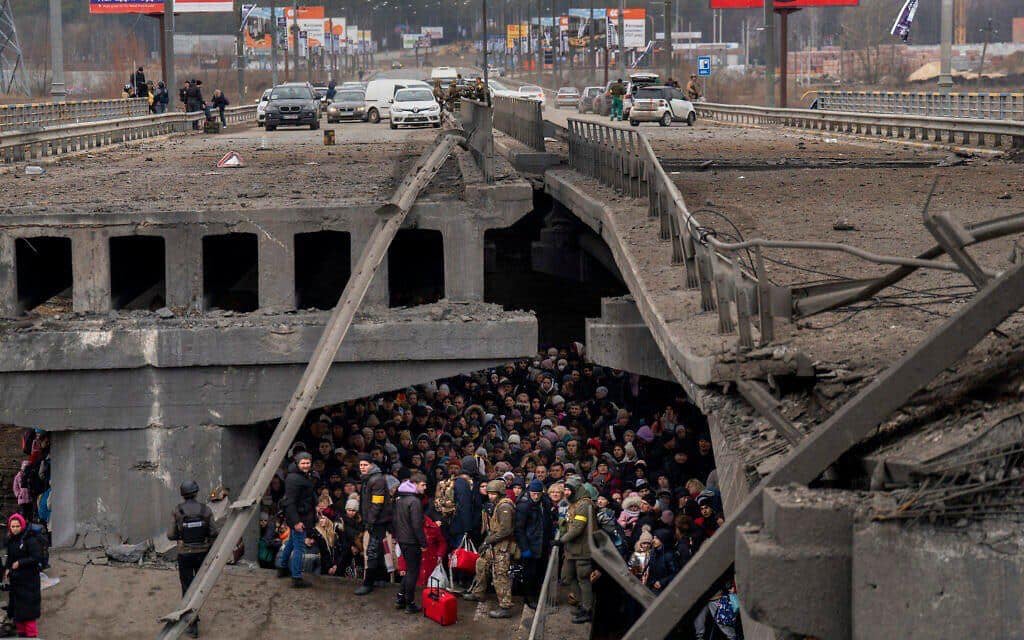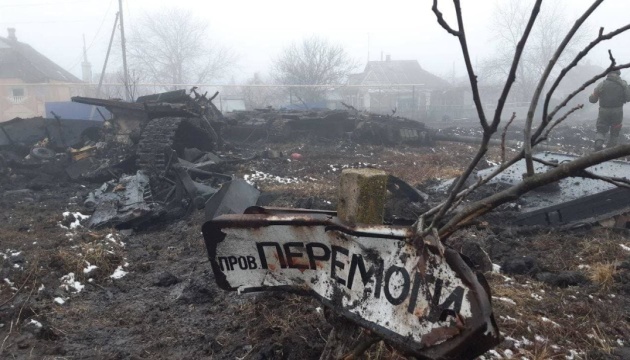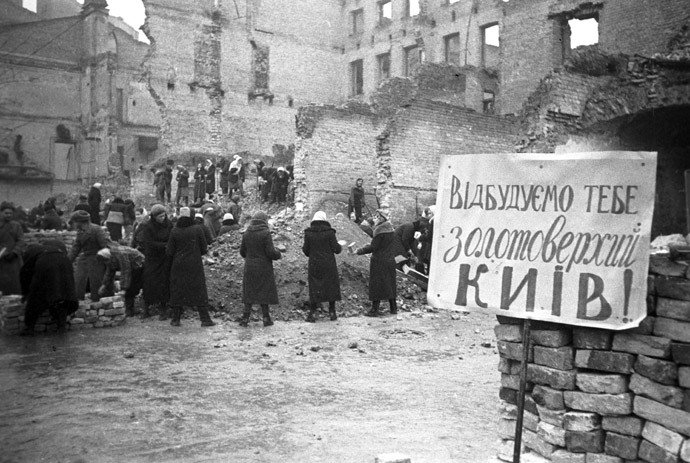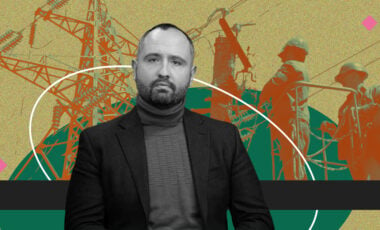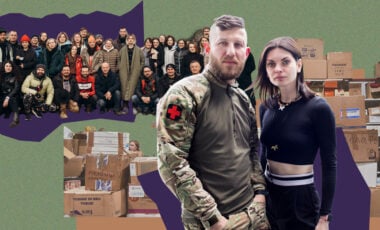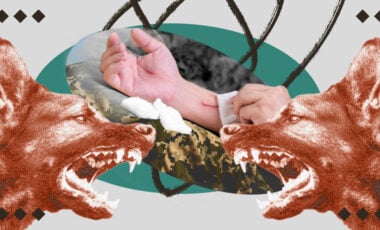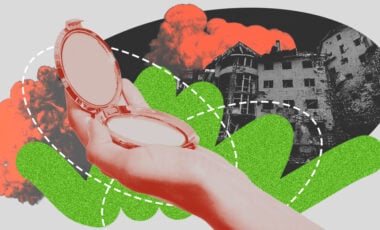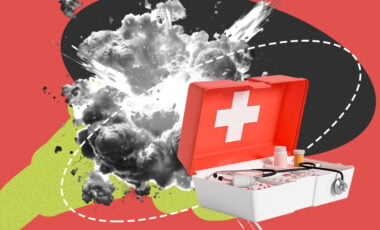How much will it cost to rebuild Ukraine and who will help us? We answer in numbers

What is the problem?
Russia's full-scale aggression against Ukraine and Ukrainians, in general, has been going on for almost a month now. Our state bravely and often successfully repulses enemy attacks. But without much success on the battlefield, the invaders resorted to tactics of terror against civilian infrastructure and civilians.
As a result, we're left with the destroyed houses, destroyed industry, and some cities have been wiped off the face of the earth. After the victory, all this will have to be rebuilt.
What is the solution?
Ukraine has already quite a lot of Russian funds frozen abroad (more on this below), but our allies are constantly announcing new and new appropriations.
What is already known as of now and what we can count on, find out in this article.
Ukraine after the war: the state of the economy and money for reconstruction
According to official statements, Ukraine needs $565 billion for reconstruction. This figure was announced by Prime Minister Denis Shmygal. His Polish counterpart Mateusz Morawiecki has offered the EU to raise 100 billion euros in aid.
The figure of $565 billion will include both reparations from Russia and funds from partners. Adviser to the President of Ukraine Oleh Ustenko said that the funds of the Central Bank of Russia in the amount of $300 billion "have already been reserved for Ukraine." These are funds frozen by sanctions outside Russia.
The Ministry of Economy of Ukraine estimates that the infrastructure alone suffered $119 billion in losses due to the war.
The losses from the war, in general, should also be taken into account, as the war on the territory of Ukraine has been going on for eight years. Back in 2014, Donbas needed almost 10 billion dollars for reconstruction, now this figure has grown significantly. In just 6 years, from 2014 to 2020, the figure is $280 billion in losses.
Of course, these are huge money that will need to be found somewhere first. The IMF, meanwhile, said that our country's GDP could fall by 10% in 2022, and public debt will be up to 60% of GDP (it should be noted that half of GDP is produced by war-torn regions).
Former Minister of Finance of Ukraine Natalia Yaresko previously brought the Caribbean island of Puerto Rico out of a deep crisis. There, due to constant natural disasters, corruption, and poor governance, the situation was almost like a war.
So, she said that only the assessment of losses and destruction took several years in such a small area. What to say about the largest country in Europe. Many engineers, rescuers, and builders will have to be called here.
Destroyed infrastructure and funds for the future
Some places will be impossible to restore, so people can build housing elsewhere; somewhere, there will be no one to return to. We will have to build new roads, build new bridges and railways, change supply routes and logistics chains.
The aviation industry is suffering huge losses as many of our airports have been damaged or destroyed.
Also destroyed are many schools, kindergartens, hospitals, cultural sites, businesses. Each region and industry must already develop a reconstruction plan, taking into account the local situation. The level of production may fall by 25-35%.
We currently have four reconstruction funds, the Cabinet of Ministers reports. The funds are aimed, in addition to the above, at:
- economic transformation;
- support of small and medium-sized businesses;
- servicing Ukraine's international financial obligations (we are not a Russia that does not pay its debts);
The Atlantic Council says it will be "the largest reconstruction in European history" since World War II.
If the war drags on, the need may eventually reach $1 trillion! Earlier, President Volodymyr Zelensky said that the West would create an analog of the Marshall Plan for the postwar restoration of our state.
Help from partners: how much and for what purposes we are given with money
It's easy to get confused here because there are really many different financial aids from different countries and organizations. Help can be divided into three tracks: European, American, all others.
For example, the EU will provide Ukraine with EUR 1.2 billion of macro-financial assistance in the form of loans, EUR 500 million as humanitarian aid.
These funds will be used to maintain a stable financial situation, says the government. The first tranche of 600 million euros, according to Finance Minister Serhiy Marchenko, may be received in full today, March 18. The EIB (European Investment Bank) will transfer 668 million euros (200 million – already in the budget). In total, negotiations are underway to receive 6 billion euros from the EU. But the second tranche will depend on the swift adoption of structural reforms.
Large banks also are going to help. The World Bank provides $700 million in emergency financing. Of these, $441 million are already in Ukrainian accounts, said Finance Minister Serhiy Marchenko.
On March 10, the IMF provided Ukraine with a $1.4 billion emergency loan through a rapid financing instrument. They will help finance budget expenditures and maintain the balance of payments.
Ukraine-friendly Canada is not left out either: Justin Trudeau's government has decided to borrow $393 million (we previously received another $120 million from Canadians as a credit).
Finally, our main ally and partner, the United States, has agreed on a $13.6 billion tranche for Ukraine and other countries. Europe will receive about $4 billion to deal with the refugee crisis. $6.7 billion will be used for the military in our country and in Europe and the provision of sanctions against the Kremlin. The rest is economic and humanitarian aid.
The United Kingdom will provide $120 million in economic aid, which was agreed before the start of full-scale hostilities. Negotiations on $500 million are underway.
Japan is also promising $75 million in humanitarian aid, while totally, Tokio wants to provide us with a $100 million tranche.
The Netherlands, Austria, and Sweden are also expected to provide $150 million through the guarantee mechanism. France and Germany will jointly allocate 600 million euros.
A separate source of income, so to speak, is grant funds. Ukraine has already raised 360-380 million euros from various countries. They will not need to be returned.
Will it definitely work?
As we can see, Ukraine is suffering and rightly demanding more financial assistance to at least cover the rebuilding costs that are growing with each passing minute of the war.
In total, Ukraine can receive from $6 to approximately $10 billion at the initial stage of the war against Russia. So far, this money goes for support and survival, rather than for reconstruction.
Even if Poland's 100 billion-euro plan works and we get access to 300 billion euros abroad, it will still not be enough to reach the $565 billion figure.
But most likely more will be needed: according to the NBU, every day of the war incurs losses of 50 billion hryvnias. Let us emphasize again that if the war drags on, Ukraine may need $1 trillion in full compensation.
It is possible to get reparations from the Kremlin in theory, but it will be very difficult negotiations. And reparations are not always determined in monetary terms. These can be natural goods, energy resources, etc. We have more chances to achieve this if we win in the international courts against Russia, as we have previously done before.
Substantial revenues immediately after the end of the war can help our country become one of those that recovered fairly quickly. On the other hand, a long war (even for a year) can reduce donor interest. Because investments can be repaid only if there is no direct security threat.
Most likely, Ukraine may need at least four years to fully recover. But there is no doubt that Ukraine will be restored and rebuilt. As well as the fact that our partners will support us in this. The West's support for Ukraine is already unprecedented.



